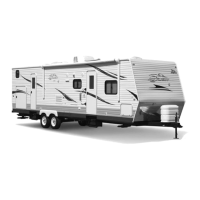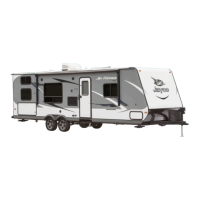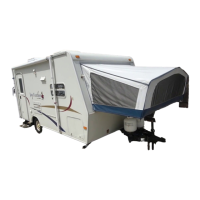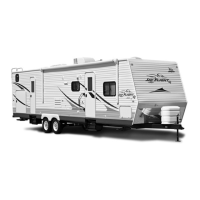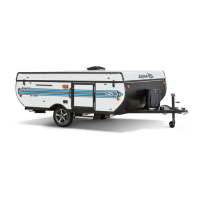70
The OneControl System will operate the hall light, lights located inside each slide-out,
exterior amber/red marker lights, or the LED lights located on the front or rear caps.
Testing The Campsite Power Connection
The campsite 120-volt power receptacle(s) should be tested for proper functionality
prior to plugging the recreation vehicle shore power cord into it.
Campsite 120-volt power receptacles can be tested using a digital multimeter or a dedicated
circuit analyzer. Dedicated circuit analyzers plug directly into the campsite power recepta-
cle and minimally test for open neutral, open ground, and correct polarity.
Always test the external power source (i.e., the campsite power receptacle or electrical box)
with a ground monitor before connecting your power cord to it. If the ground monitor indi-
cates ‘reverse polarity’ or an ‘open ground’ DO NOT connect the power cord.
plug the shore power cord into a campsite receptacle(s):
That has reverse polarity
With non-functioning ground circuits
That shows outward signs of heat damage.
. Plugging the
shore power cord into an incorrectly wired power source could damage the
recreation vehicle electrical system and result in severe or fatal injury. Dam-
age or injury resulting from connection to malfunctioning or improperly wired
power sources is covered by your recreation vehicle warranty.
Do not use any cheater plug, adapter or extension cord to recongure
incoming AC power or break the continuity of the circuit connected to
the grounding pin.
Do not connect the power cord into an outlet that is not grounded, or
adapt the power cord plug to connect it to a receptacle for which it is not
designed.
Do not remove the grounding pin to connect to a non-grounded recep-
tacle. Removal of the ground pin disables an important safety feature
designed to prevent shock and electrocution hazards.
Do not connect the power cord to an extension cord. Use of an improper
extension cord will cause overheating of the cord as well as potentially
causing premature failure of the AC equipment.
The power cord must be fully extended when in use and not left coiled
in the electrical compartment or on the ground. A power cord left coiled
may potentially create enough heat to melt its protective casing.
It is the responsibility of the owner of the electrical receptacle to ensure that
the receptacle is properly wired and grounded.
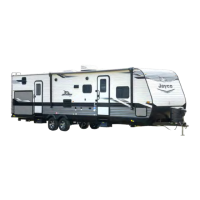
